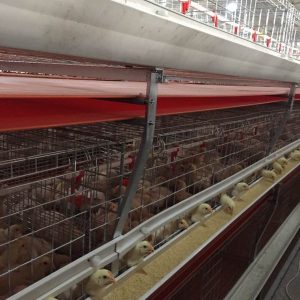
How to breed fly maggots? The easiest way to raise maggots
How to breed fly maggots? The larvae of flies are called fly maggots. Fly maggots feed on livestock and poultry manure, and grow and reproduce very quickly. Artificial breeding does not require a lot of equipment. Both indoor and outdoor, urban and rural areas can be cultured. The crude protein content of fly maggot powder is as high as 56% to 63% (average 59.5%), fat 13%, ash 7%, sugar 3.1%. As a high-protein feed, the nutritional level of fly maggots is comparable to the best imported Peruvian fish meal, 1.3 times that of bean cake and 1.9 times that of bone meal. Not only can it directly feed conventional pigs, chickens, ducks, and fish, but also the best live bait for special animals such as shrimp, crab, eel, eel, American frog, bullfrog, starfish, grouper, turtle, etc. How to breed fly maggots? The easiest way to raise maggots?
What are the uses of fly maggots?
Fly maggot protein is a treasure. The fly maggot protein can not only be used as high-quality protein feed, but also can extract eggs ***, develop advanced nutritional food, and can obtain fat, antibiotics, lectin and other biochemical products at the same time in the production process. Antimicrobial proteins can eliminate-cut fungal microorganisms and have a strong bactericidal effect. Maggot shell is a good raw material for extracting chitin. Chitin is known as the sixth vital element of human body except sugar, protein fat, vitamins and minerals. The production of fly maggots is simple and easy. The production of fly maggots does not require any epidemic prevention measures nor modernized factory buildings. It can be mass-produced by thermal insulation, manure supply, and escape under civil water and electricity equipment. It does not produce toxic substances and does not pollute the environment. The fly maggots can be regarded as outstanding chemical engineers.
What are the methods of cultivating fly maggots
One kind is the preparation of agricultural and sideline products such as wheat bran, rice bran, distillers grains, okara, sugar grains, slaughterhouse scraps, etc. The first type is made from animal manure such as cow manure, horse manure, pig manure, chicken manure, etc. through complex fermentation. The pre-class is mainly to master the proportion of each component, control the water content to about 60%, and the substrate should go through the fermentation process before the eggs are laid. The back-type substrate requires that the raw material is short, fine, fresh, and has a water content of about 70%. Before use, two or more substrates are mixed and piled up in proportion, the film is covered with a cover, and fermented for more than 48 hours. It can be laid; its PH requirement is between 6.5-7.0, peracid can be adjusted with lime, and over-alkali can be adjusted with dilute hydrochloric acid; 40-50 kg per square meter of pond area is poured into the substrate, and 20-25 g of fly eggs are connected The maggot feed with a ratio of chicken manure to pig manure of 1: 2 is better. -Generally keep the material thickness about 7-10 liters, humidity about 70% -80%, under the condition of 18-33 ℃, after 3-32 hours. The larvae can be hatched, and the larvae can be harvested after 4-5 days of larvae feeding on the larvae and growing to the pupa.
Fly maggot breeding technology
1 Set up a number of tanks, pots and earth embankments (paved with plastic film) on the pond slope in the wind and the sun as a container for maggots.
2 Add pig manure, chicken manure, bean shit, wheat bran, etc. with a human water content of about 70% to the container, mix well; add about 10 cm of slaughter scraps, dead fish, etc., and then cover the container mouth On the perforated film that allows flies to enter and exit, the flies smell and smell and enter into feeding and laying eggs, and hatch larvae in 4 to 5 days.
Several methods of maggot breeding
3 The young maggots can be divided into other containers, and new nutrients can be added to make the young maggots grow and mature and increase the yield.
4 During the cultivation process, remove the residual feces twice a day, keep the feces in the container 10-15 cm thick, and turn the feces 1 or 2 times at the same time to eliminate exhaust gas and increase oxygen.
5 When the larvae eat less, start to drain, and when it is close to maturity, they can be poured into the barbed wire sieve together with the dung. After the light is enhanced, the larvae are forced to fall. Dry spare.
Several methods of maggot breeding
6 Stir the potatoes and bran into a paste, add fish heads, dead fish, pig’s water, sheep’s water, fish eggs, fish intestines and other stinking animal carcasses or scraps, add some urine, Then put these lures in a black crock or black porcelain jar to lure flies to lay eggs.
Artificial reproduction method of fly maggots
1 Inducing flies to breed maggots: In summer, flies have strong fertility. You can choose a sunny ground outdoors or in the courtyard, dig into small pits 0.5 meters deep, 1 meter long and 1 meter wide, which are made of bricks and smoothed with cement. Use wood plate or cement prefabricated board as the upper cover, install the light-transmitting window, seal the window with glass or transparent plastic cloth, and then open a small opening 17 cm long and 7 cm wide. Place small animal carcasses or human and animal feces in the pool to attract Flies entered the maggots inside. It should be noted that flies cannot be allowed to fly out. Fresh manure is the best feed for flies, and the effect is better. After more than 10 days, each pond can produce maggots of about 6 kg, which is not only large but also obese, and can be fed to eel when it is removed.
2 The mound breeding maggot method: This method is to mix garbage, alcohol, turf, chicken feathers, etc. into a paste, pile it into a small mound, and seal it with mud. After about 10 days, a large number of fly maggots will be produced. Simple and easy.
3. Tofu maggot breeding method: use 25 kg each of tofu and dishwashing water, mix in the tank, and after 3-5 days, a large amount of maggots will naturally multiply in the tank, remove the maggots, and mix it with feed Feed eel inside. At the same time, the bean curd residue can also be fermented, put into the earth pit, add some rice water, and seal the mouth after stirring. After about 5-7 days, a lot of fly maggots will also be produced.
4. Cow dung breeding maggot method: mix the dried and crushed cow dung in rice bran, pile up with sludge into small piles, cover with grass curtains, about 10 days later, a large number of small maggots can also grow, turn the mound, After gently separating the maggots, the raw materials are piled up, and after a few days, many maggots can be produced.



